A Cross-Cultural Eid
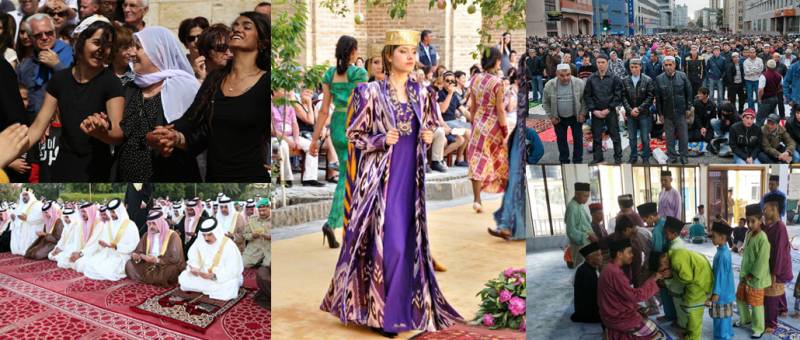
Though the entire Muslim world becomes one with these practices, different cultures and traditions have colours of their own.
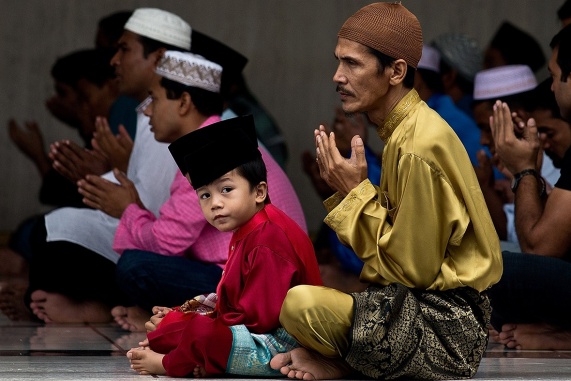
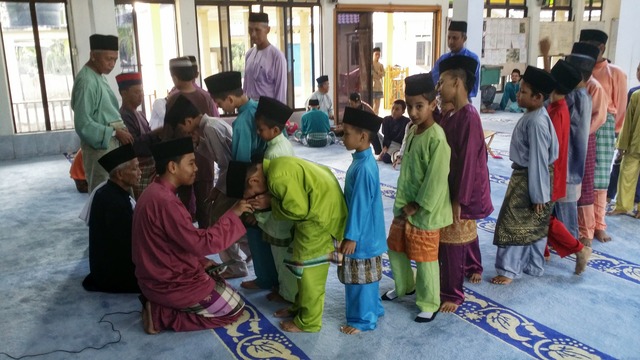
Malaysia and Indonesia
In many Muslim South-East Asian countries, the whole family dresses well to go for Eid prayers in the mosque, including the women, children and elderly. Men wear traditional Kufi caps on Eid which originally used to be black but varying colours are now available considering changing times and trends.
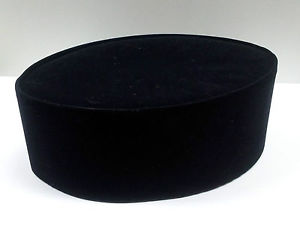
(Kufi Cap)
In Indonesia the 'Mohon Maaf' tradition is observed where young people seek forgiveness for their misgivings from their elders so they can be blessed for the rest of the year. Children receive Eidi in fancy envelopes which is normally 5-10 Malaysian Ringgit.
Celebratory foods in Malaysia are ‘Rundang’ which is beef cooked in coconut overnight and ‘Lamang’, a rice dish cooked in bamboo. These are a must on Eid. Assorted cookies and sweets are displayed in fancy jars such as pineapple stuffed pastries and the popular ‘Ondeh Ondeh’ which are dessert balls made of palm sugar and glutinous rice.
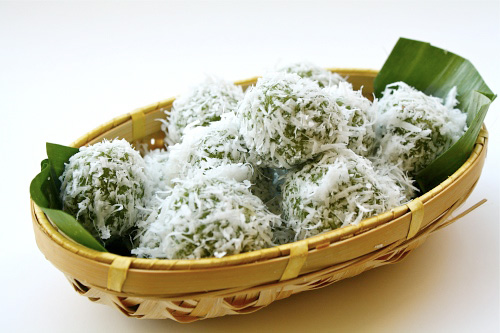
(Ondeh Ondeh)
Muslim houses are decorated with lights and colourful ribbon Ketupat which is essentially a diamond-shaped container of woven palm leaf pouch.
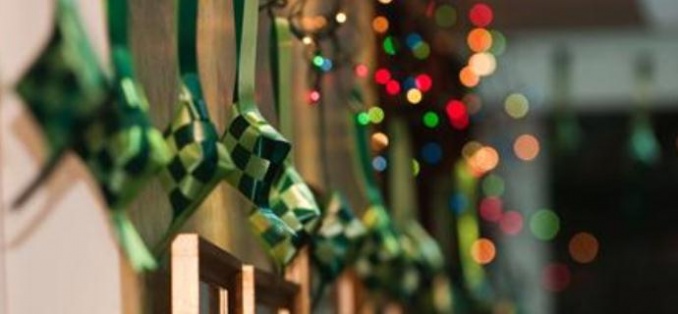
(Ketupat)
Uzbekistan and neighbouring states
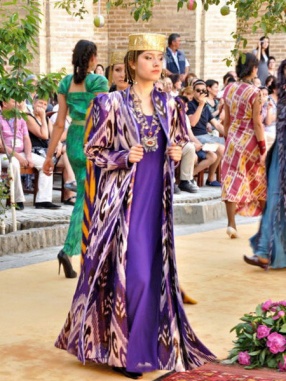
Uzbeks are what we call morning larks for all their events are scheduled early in the morning. Eid may be celebrated with the same zeal as other nations, but there is only a single holiday granted by the state. They carry on with Eid festivities the same day as Saudi Arabia as there is no moon viewing committee.
With the large widespread of Russian culture, traditional Uzbek attire is mostly donned by older citizens. Eid being a special occasion sees many women wear their cultural long skirts full of fancy embroideries all over.
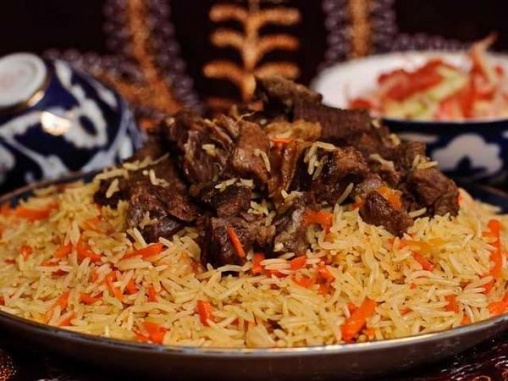
Every house on the prestigious day serves Plov, a rice dish made with beef or mutton, carrots, raisins, nuts and plenty of fat, usually eaten with a special bread called Osh Markazi meaning good-bread. Side dishes include many varieties of salads, sweet and savoury samosas and a special sweet called Çäkçäk. It is made from unleavened dough cut and rolled into hazelnut-sized balls, which are then deep-fried in oil.
Most restaurants are closed during Eid as there isn’t much of a concept of eating out.
Bahrain
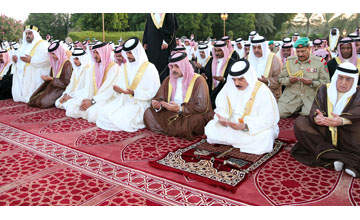
People in Bahrain are very specific about their meeting schedules on Eid. The first day is for families, second day is for friends and the third day is for their own personal hangout. If a friend calls them over, they turn down the invite on the first and third day.
People usually have open houses which means that they gave a time slot for everyone to visit. Brunches are the norm where the time 11:00-4:00 in the afternoon is allotted so that friends can visit and have anything from the buffet.
The buffet is a large blend of sweet and savoury foods including Umm Ali, Umm a delicious traditional Egyptian dessert equivalent to North America's bread pudding. It is made of layers of puff pastry tossed with dried fruit and nuts, soaked with sweet milk and baked. Kunafa is also served traditionally, which the Middle East’s version of a cheesecake. The main savoury dish is slow steamed lamb served with rice called Gouzi.
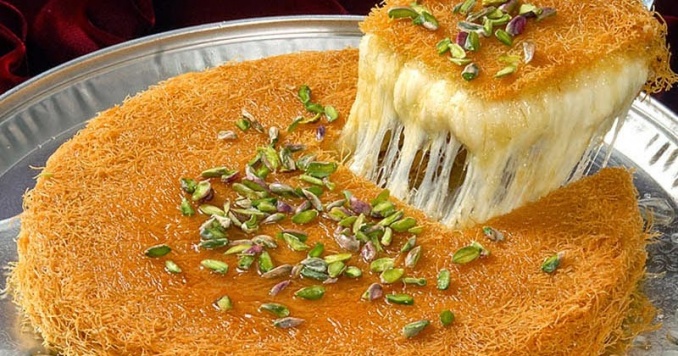
(Kunafa)
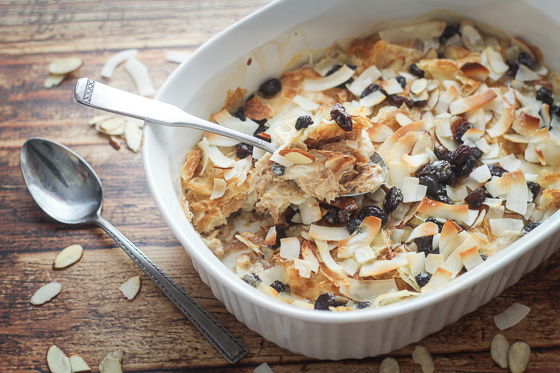
(Umm Ali)
Europe
Eid across Europe is very different from the usual Pakistani Eid celebrations that we witness. Since Muslims are less in number, all Muslim communities gather together at a mosque in the morning, spending time together and perhaps end the day by going out for a movie. They all wear traditional clothes, consequently standing out from the rest to show pride in their heritage. At night all have dinner together even if they aren't relatives as it’s this Muslim bond they have away from their country.
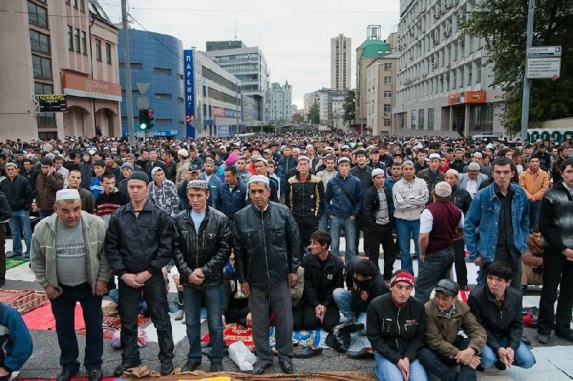
Surrounded by a majority of non-Muslims on a daily basis, they meet and greet any Muslim they see and exchange Eid gifts. Beauty parlours there are expensive so ladies dress up at home even for Eid.
European Muslims celebrate Eid with Saudi Arabia.
Qatar
To begin with, Ramadan culture in Qatar is of a whole new level. Malls are decorated in lights, shops run Eid promotions, and virtually no work gets done in Ramadan. Offices are let off at 1 pm, and most go home and sleep it off, only to hit the mall after iftari till sehri time.
Every spot across Doha hosts its own party and firework show on Eid, but it's really unlike anything you've ever seen. Lights everywhere, fireworks from every vantage point - musicians performing in droves at different spots often incites the locals to get up and dance. It's more elaborate and glamorous than anything you can imagine.
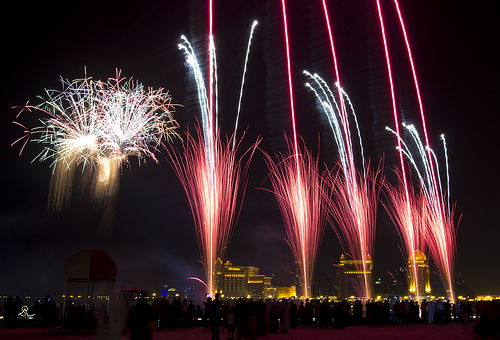
Shehzil Zahid, a frequent visitor to Qatar tells us,
“I went to a firework show on Katara Beach some three years ago. It was on the first day of Eid ul Fitr, and though it was one of the most humid days the city had ever seen, there was no shortage of visitors and attendants. There was great food, crashing waves and throngs of multicultural multiracial people. In fact, you couldn't get a parking space anywhere, and that's how it is everywhere you go.”
Everyone comes out to party as the government, local and large businesses and institutional elements create an inclusive environment of never ending celebrations.
Only some 20-30 percent residents are local. Everyone else is an expatriate, but the majority of expats are Indian, Bengali, Pakistani or of Arab or African descent i.e. Lebanese Jordanian Saudi Nigerian Ethiopian and so on. When you go to the mosque for Eid prayers, you really do feel like you're part of a larger brother/sisterhood, seeing so many people who look like you, and so many more who don't.
Palestine
Eid in Palestine has a different taste and happiness no one else can understand as they are still living under Israeli occupation. When Eid, a short time of happiness comes, people are quick to gather at their parents’ house where all members of the family are present. In cases where the parents have died, families collect at the elder brother’s house.
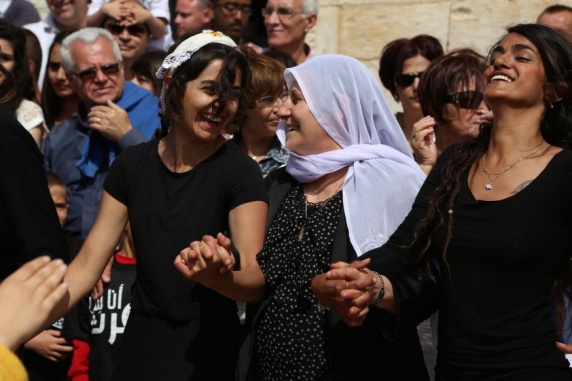
A Palestine native, Yazan Abu Ali said,
“Eid is a significantly emotional day as everyone celebrates and eats together, not knowing when you might face death at any point at any time.”
After the morning prayers and gathering, Palestinians start off their day with some coffee or black tea with a light breakfast. It can’t be heavy in order to transition healthily from Ramadan to a normal routine.
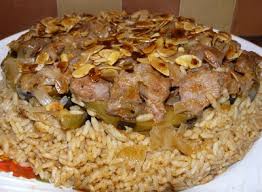
(Maqlobeh)
A meal very illustrious and celebratory there is Maqlobeh which is made rice, eggplant, potatoes, cauliflower and some form of meat. Maqlobeh literally means upside down. It is made by assembling layers of meat, followed by vegetables and then rice in a pressure cooker. Once cooked, it is inverted onto a serving dish showing beautiful layers of ingredients.
North Africa
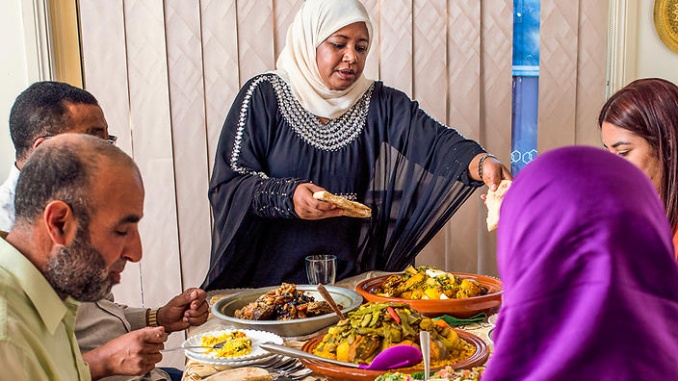
While gift giving and decorating of homes and public spaces may be common in the West or in other parts of the Muslim world, North African holiday observances are not very commercialised. Gift exchanges are not conventional, particularly among adults, but many families observe a tradition of buying new clothes for their children and less frequently toys or other small gifts.
Although any number of dishes might be prepared for an Eid dinner, common choices in Morocco are couscous dishes, lamb or beef with prunes, chicken with preserved lemons and olives, chicken bastilla or lamb or beef brochettes.
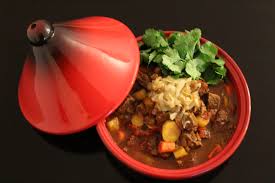 (Tagine)
(Tagine)
Many other African states such as Algeria, Egypt and Tunisia celebrate Eid with Tagine, a stew cooked in ceramic tagines (a kind of earth ware).
India/ Bangladesh
Eid is an on-going festival where celebrations begin from Chaand Raat that is 'Night of the Moon'. For Eid celebration in India, Muslims visit shopping malls and bazaars on this night to shop. Beautiful henna designs are drawn on the palms of women, mostly young girls and multi-coloured bangles are collected to match their outfits.
This celebration’s excitement can be best seen in Hyderabad which has rich heritage of Muslim culture. In Hyderabad Haleem is consumed daily in iftar, which is a kind of meat stew.
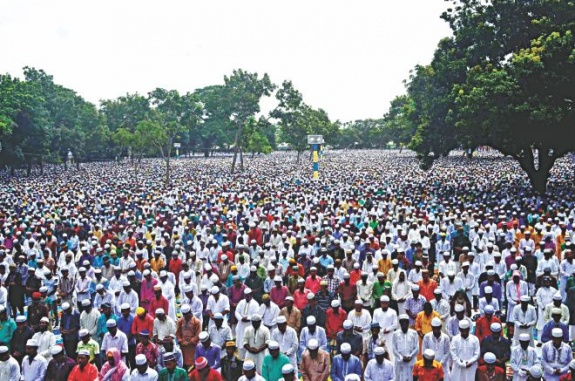
In Bangladesh there is an Eidgah in the locality of Sholakia, where a huge congregation of people gathers to offer Eid prayers that is offered after Chaand Raat that announces the end of Ramadan. It is said that it constitutes the largest number in Bangladesh as almost 300,000 people come together on this day.
How are you celebrating Eid? Tell us in the comments below!
